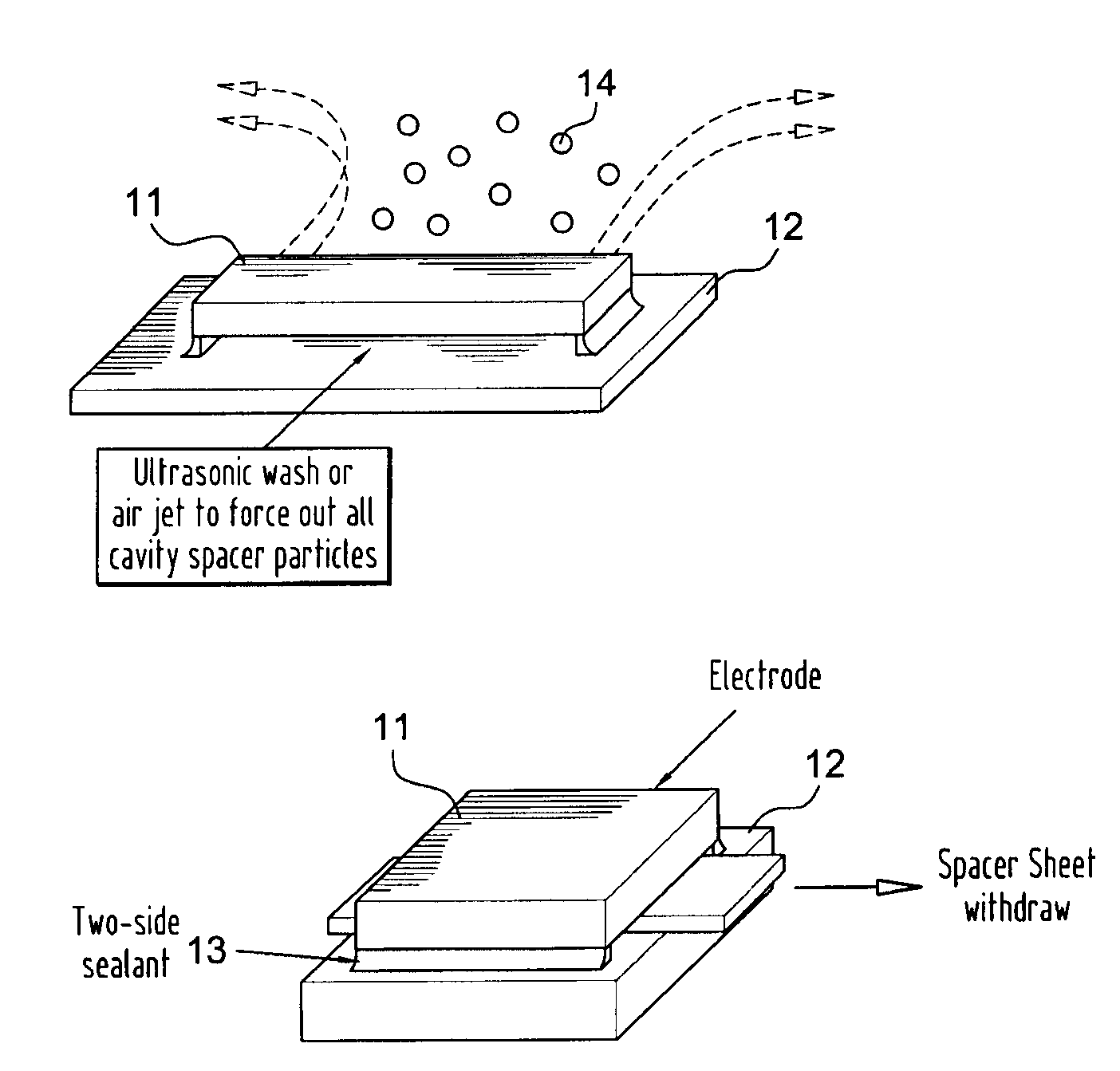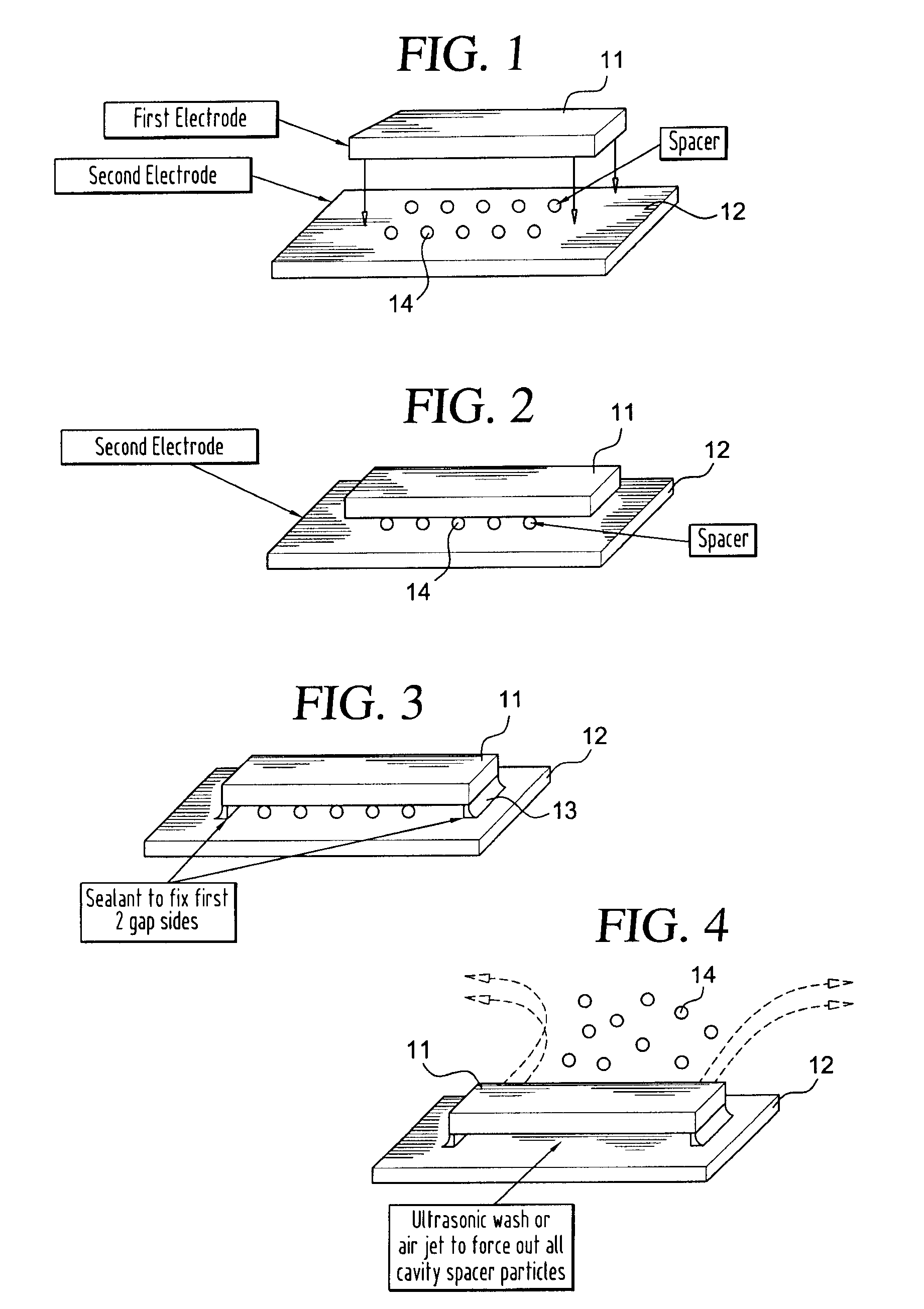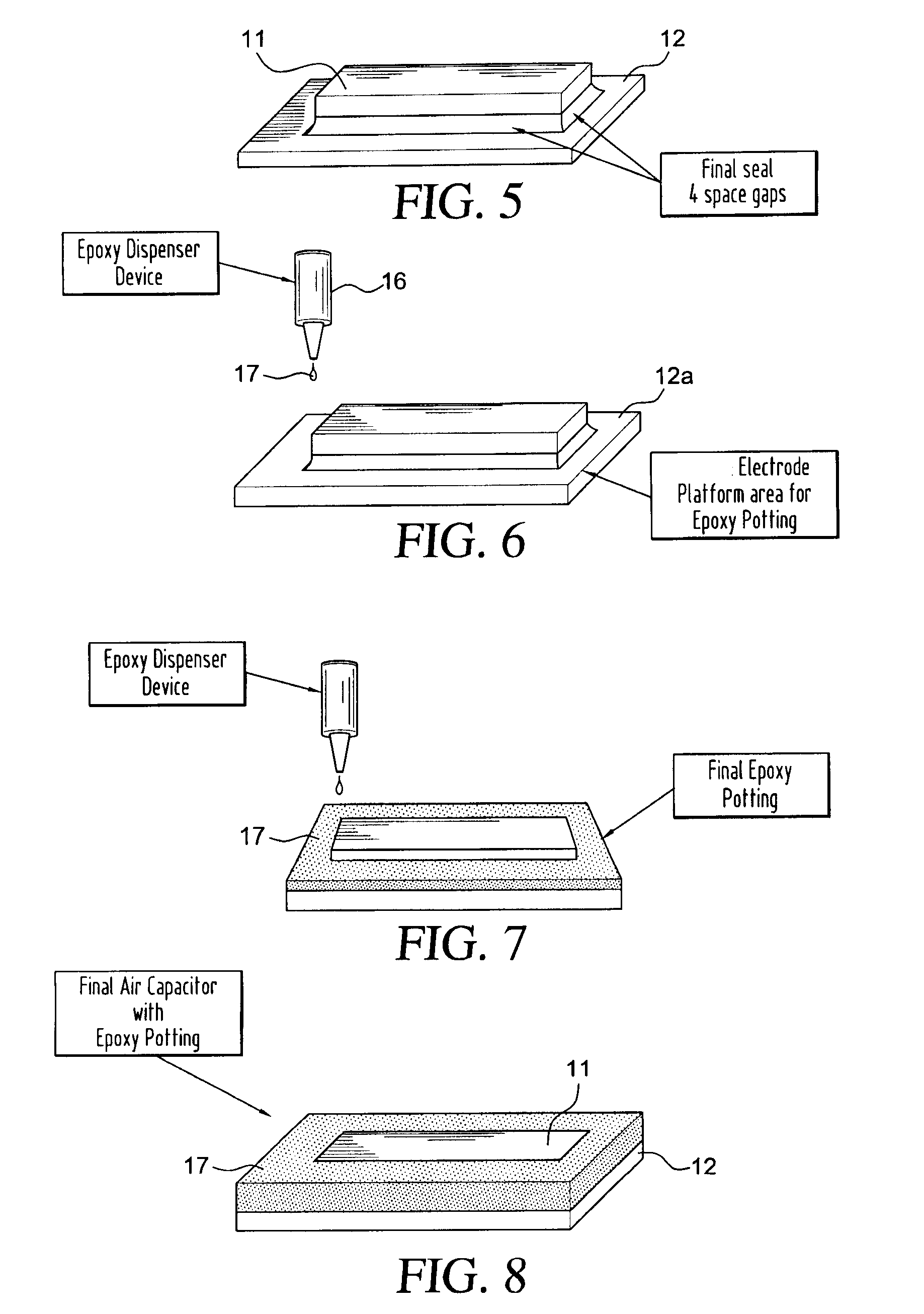Device and method for making air, gas or vacuum capacitors and other microwave components
a technology of capacitors and microwave components, applied in the direction of capacitors, fixed capacitor details, electrical equipment, etc., can solve the problems of complex circuits for generating and processing signals in the millimeter wave spectrum, component designers face significant challenges, and components are increasingly difficult to maintain. , to achieve the effect of reducing the cost of components, improving the quality of components, and improving the quality
- Summary
- Abstract
- Description
- Claims
- Application Information
AI Technical Summary
Benefits of technology
Problems solved by technology
Method used
Image
Examples
Embodiment Construction
[0030]The fundamental formula for a capacitor having 2 planar parallel electrodes / plates separated by a dielectric material is:
C=0.0885εA / d (1);
[0031]where C is the capacitance in picofarads (pF);
[0032]∈ is the dielectric constant;
[0033]A is the area common to both electrodes in, for example, centimeters; and
[0034]d is the distance or spacing between the electrodes in, for example, centimeters.
[0035]In practice, the dielectric constant c is determined by the material between the electrodes of the capacitor. Many common dielectric materials used in capacitors designed for lower frequency operations exhibit a significant change in dielectric constant ε as well as higher losses as the frequency increases. That is, the value of the dielectric constant ε is a function of frequency. At low frequencies, having a dielectric material with a high dielectric constant ε produces greater capacitance for the size of the component. At higher frequencies, the internal equivalent series resistance ...
PUM
 Login to View More
Login to View More Abstract
Description
Claims
Application Information
 Login to View More
Login to View More - R&D
- Intellectual Property
- Life Sciences
- Materials
- Tech Scout
- Unparalleled Data Quality
- Higher Quality Content
- 60% Fewer Hallucinations
Browse by: Latest US Patents, China's latest patents, Technical Efficacy Thesaurus, Application Domain, Technology Topic, Popular Technical Reports.
© 2025 PatSnap. All rights reserved.Legal|Privacy policy|Modern Slavery Act Transparency Statement|Sitemap|About US| Contact US: help@patsnap.com



